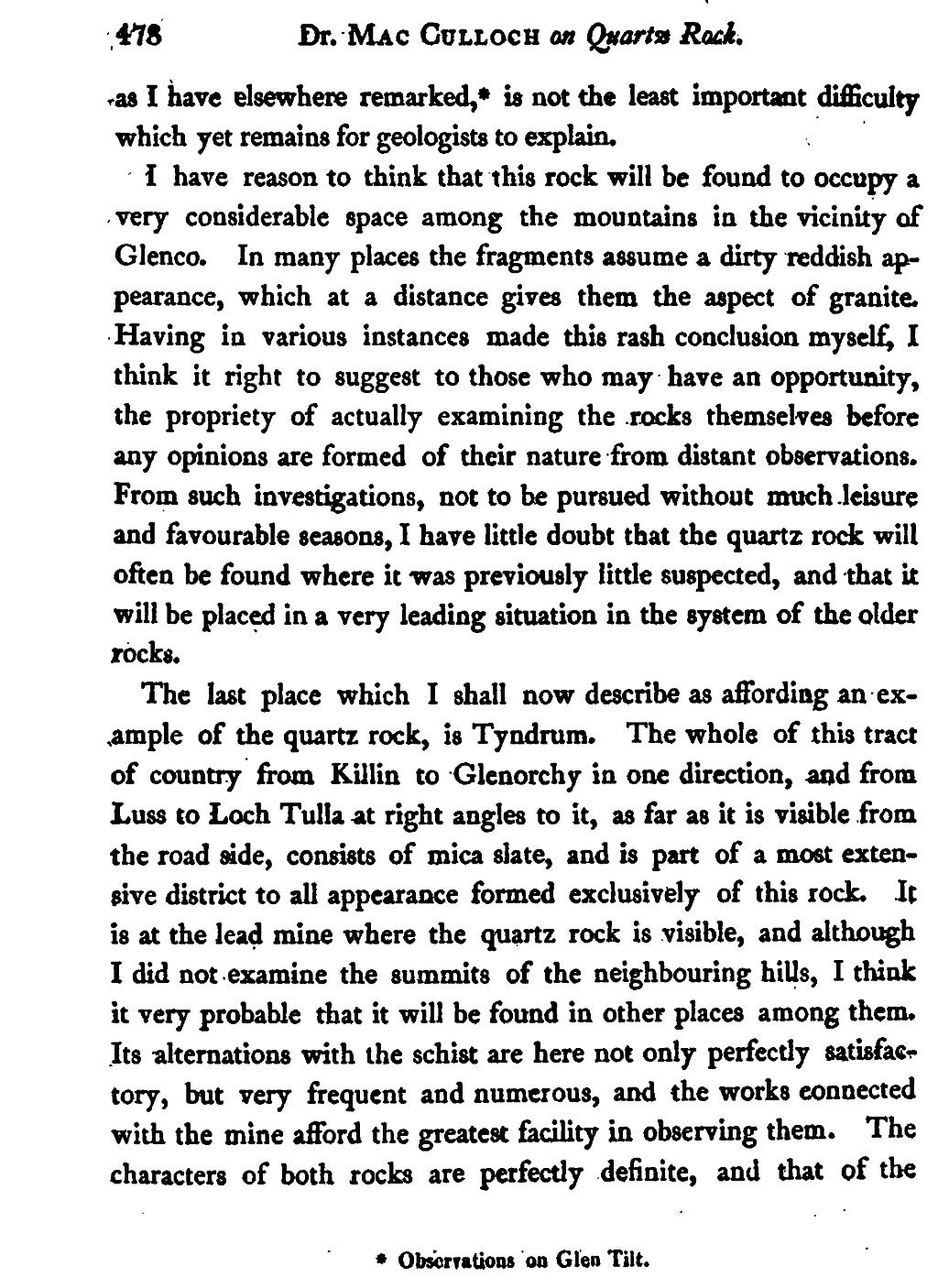as I have elsewhere remarked,[1] is not the least important difficulty which yet remains for geologists to explain.
I have reason to think that this rock will be found to occupy a very considerable space among the mountains in the vicinity of Glenco. In many places the fragments assume a dirty reddish appearance, which at a distance gives them the aspect of granite. Having in various instances made this rash conclusion myself, I think it right to suggest to those who may have an opportunity, the propriety of actually examining the rocks themselves before any opinions are formed of their nature from distant observations. From such investigations, not to be pursued without much leisure and favourable seasons, I have little doubt that the quartz rock will often be found where it was previously little suspected, and that it will be placed in a very leading situation in the system of the older rocks.
The last place which I shall now describe as affording an example of the quartz rock, is Tyndrum. The whole of this tract of country from Killin to Glenorchy in one direction, and from Luss to Loch Tulla at right angles to it, as far as it is visible from the road side, consists of mica slate, and is part of a most extensive district to all appearance formed exclusively of this rock. It is at the lead mine where the quartz rock is visible, and although I did not examine the summits of the neighbouring hills, I think it very probable that it will be found in other places among them. Its alternations with the schist are here not only perfectly satisfactory, but very frequent and numerous, and the works connected with the mine afford the greatest facility in observing them. The characters of both rocks are perfectly definite, and that of the
- ↑ Observations on Glen Tilt.
